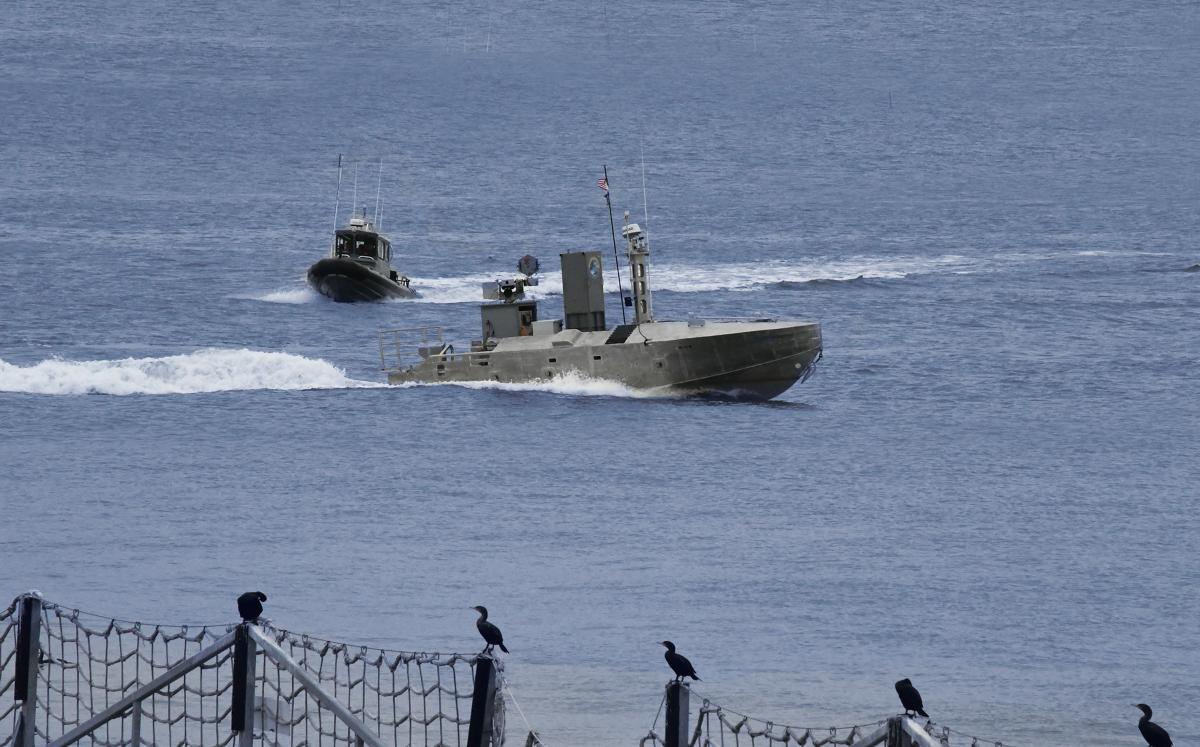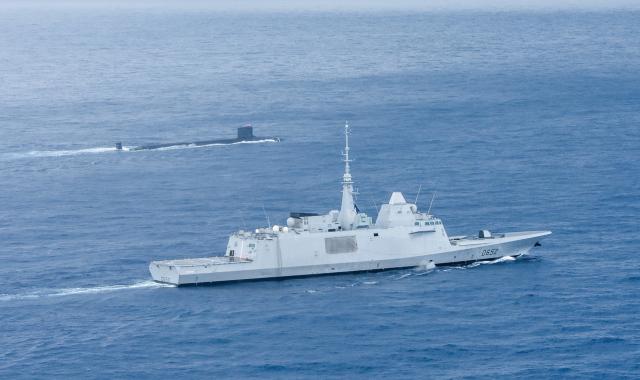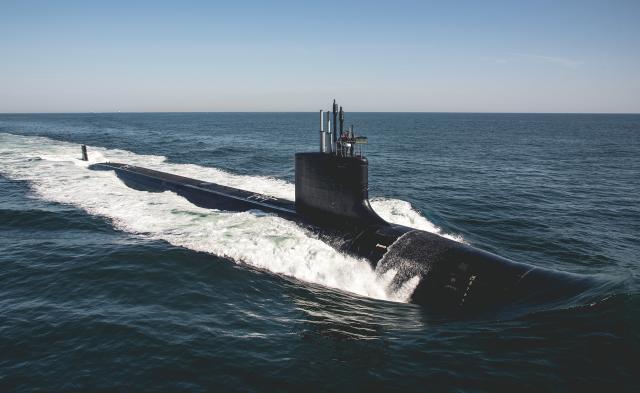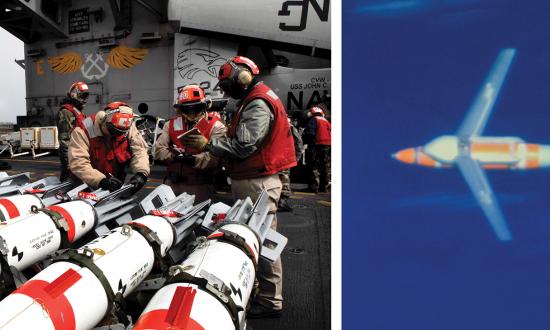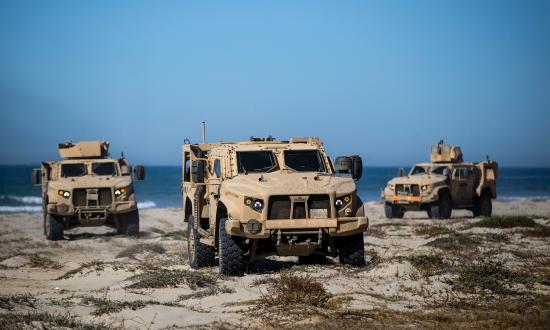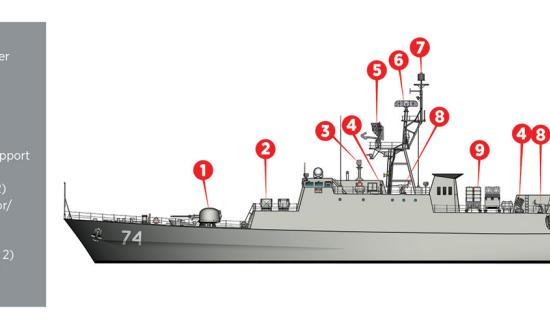The Navy is continuing to explore ways to use Textron’s Common Unmanned Surface Vehicle (CUSV—pronounced “CUSS-vee”) in a variety of missions.
At 39 feet long and 7.7 tons displacement, the CUSV is small enough to be deployed from a littoral combat ship (LCS), any ship with a well deck, or a pier in a harbor. Although a variety of sources report a range of up to 1,400 nautical miles (nm), the company’s website lists a much shorter 140 kilometers (about 75 nm), with a reported 35-knot top speed.
The Navy had originally planned for the LCS to employ Lockheed Martin’s Remote Minehunting System, but that unmanned underwater vehicle was canceled in 2016 after technical problems led to increasing costs.
USNI News reported in January that the Navy was experimenting with the CUSV—in a configuration dubbed MCM USV—from the USS Independence (LCS-2), as well as the USS Hershel “Woody” Williams (ESB-4) and a British auxiliary landing ship.
Textron announced in late February that the Unmanned Influence Sweep System built around the MCM USV had achieved a Milestone C decision. This permits the company to begin building three additional hulls for testing and development as part of low-rate initial production. The company will test them with Raytheon AN/AQS-20 and Northrop Grumman AN/AQS-24 sonars.
Also in February, during the antiterrorism exercise Citadel Shield–Solid Curtain 2020 at Naval Station Norfolk, Virginia, the Navy tested a port-security module on the CUSV. According to various media reports, the module included optical and electronic sensors and a remotely operated .50-caliber machine gun. The system also includes a hailing system for warning boats that stray too close to high-value targets and restricted areas.
The CUSV is designed to be able to incorporate multiple modules onto the basic hull system, which is capable of towing two tons at speeds up to 20 knots. Surface warfare and intelligence, surveillance, and reconnaissance modules are also being considered.
Navy Selects FFG(X)
In a surprise announcement, on 30 April, the Navy reported it had awarded a contract for detail design and construction of one guided-missile frigate (FFG), with an option for up to nine more, to Marinette Marine Corporation of Marinette, Wisconsin. The contract for the future frigate (FFG[X]) had not been expected to be awarded before late summer.
One of the key requirements for the FFG(X) design is that it be based on a ship already in service with the U.S. Navy or a partner. Marinette Marine is a U.S. subsidiary of European shipbuilder Fincantieri, and the company’s design is based on the European multipurpose frigate (FREMM), in service with the French and Italian navies since 2012. Egypt and Morocco each also possesses a FREMM.
More details on the European version and the modifications expected for the U.S. Navy will be featured in the July Combat Fleets column.
Subs Commissioned
The Navy commissioned two new nuclear-powered attack submarines in April, the USS Vermont (SSN-792) and Delaware (SSN-791). Because of restrictions on public gatherings, both Virginia-class submarines were commissioned administratively at the planned times, without the pomp and circumstance of formal ceremonies.
The Block III Delaware’s commissioning had been scheduled for the Port of Wilmington in Delaware on 4 April 2020. The cancellation of a public event allowed the Delaware to achieve what appears to be a first for the Navy: She commissioned under way while submerged. James Geurts, Assistant Secretary of the Navy for Research, Development, and Acquisition, told reporters from multiple outlets that, under Commander Matthew Horton, the crew marked the occasion by firing water slugs from two torpedo tubes, sounding the klaxon, and ordering full speed ahead to bring the ship to life.
The Delaware is the seventh Navy ship named for the First State. She was laid down on 30 April 2016 in Newport News, Virginia, by Newport News Shipbuilding; christened on 20 October 2018; and sponsored by Dr. Jill Biden, former Second Lady of the United States and wife of former Vice President and current presidential candidate Joe Biden.
The Block IV Vermont, under command of Commander Henry M. Roenke III, is the third U.S. Navy ship named for the Green Mountain State. (The first, one of the Navy’s few 74-gun ships of the line, was laid down in 1818 and completed about 1825, but she was not commissioned until 1862.) The construction of the Vermont began on 1 May 2014 in Groton, Connecticut, at General Dynamics Electric Boat. She was christened on 20 October 2018 and sponsored by Ms. Gloria Valdez, former Deputy Assistant Secretary of the Navy (Ships).
—Jim Dolbow
| Virginia-class Submarines |
| Displacement Approximately 7,800 tons |
| Length 377 feet |
| Beam 34 feet |
| Speed 25+ knots submerged |
| Complement 132 (15 officers and 117 enlisted) |
| Depth Greater than 800 feet |
| Vertical launching system 12 cells |
| Missiles 12 Tomahawk cruise missiles |
| Torpedoes 25 Mk 48 Advanced Capability torpedoes |



